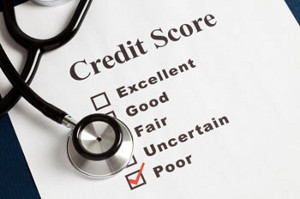7 Obstacles Between You and the Best Mortgage Rates
By Gretchen Wegrich Updated on 7/27/2017
 According to Zillow’s forecast, housing prices are bottoming out in many markets -- meaning that now is the time for buyers to think about entering the market and for homeowners to consider refinancing to a lower mortgage rate.
According to Zillow’s forecast, housing prices are bottoming out in many markets -- meaning that now is the time for buyers to think about entering the market and for homeowners to consider refinancing to a lower mortgage rate.
So, what are the seven obstacles that could prevent you from receiving the best mortgage rates?
1. Self-Employment
Lenders now expect borrowers to be able to document everything, starting with assets and income fully. This is not a problem for salaried employees, as they can easily produce W-2 earnings statements. However, this is slightly more difficult for self-employed individuals.
The solution: Gather your annual and quarterly federal income-tax returns from the past two or three years to prove your Schedule C earnings.
Wage earners should produce several years of tax returns if they have a recent employment gap. Investment statements, bank savings accounts, property deeds, and appraisals are all additional ways to document your assets.
2. A credit score below 740
Most lenders require a minimum FICO score of 680 to obtain a mortgage loan, but 740 is ideal for the best possible rate.
The solution: Look through your credit reports from the three main credit-reporting bureaus – Equifax, Experian, and TransUnion – to search for errors that unfairly hurt your score. Also look for black marks such as paid-off loans that went unreported, low credit limits, collection items, and any unfamiliar accounts or negative items resulting from identity theft. Dispute and fix anything that does not look right to you.
Your credit score will improve once the credit bureaus clean up and correct any of this information.
3. Carrying too much debt
Typically, lending criteria limit the size of your monthly mortgage payment to 28% of your monthly gross income. Your total household debt payments should not be more than 36%. The lowest rates are saved for borrowers who come in below those targets.
The solution: Find a solution to boost your income to pay off your debt quicker. For example, a spouse who is not working could take a part-time job or turn a hobby into income. Moreover, avoid taking out any new loans or opening up a new credit card account. Steer clear of big purchases such as cars, electronics, or appliances. Apply your new extra income to your existing debt, which will then give your balance sheet a kick.
4. Putting less than 20% down
The old rules are back: the traditional, pre-bubble mortgage standards known as the four C’s: credit, collateral, capacity, and capital, rule supreme. A down payment is the cash amount of collateral that you put at risk, along with the property’s appraised value, which the lender can take if you stop making payments on your mortgage.
The solution: Find ways to increase your down payment. If you can, sell less-liquid assets and keep more-liquid assets to meet lenders’ high cash reserve requirements. You could also borrow from your 401(k). If you do access your 401(k), you will have to report it on your application. The payback amount becomes a commitment against your available monthly income in calculating how much you can afford for mortgage payments.
5. An existing mortgage that is underwater
If you would like to make your home payments more manageable, but your current mortgage is bigger than your home’s market value, you may be hindered by problems #3 and #4.
The solution: The Home Affordable Refinance Program (HARP) could help if your mortgage was sold before June 2009 to the Federal National Mortgage Association (Fannie Mae). If your loan is not owned by Fannie Mae or Freddie Mac, you do not qualify for HARP.
You could qualify for other assistance programs - speak with a qualified mortgage professional.
6. Being denied by one or two lenders
Mortgage standards can be the same across the marketplace and differ from one lender to another. But don’t let it upset you if the first couple of lenders reject you or offer you rates that are much higher than you’d like.
The solution: You should still shop around. Lenders write a certain percentage of mortgages to have in their portfolios with no intention of ever selling them to Fannie or Freddie. Try to figure out what went wrong and fix it promptly. Try shopping at banks, savings and loans, and your credit union.
The mortgage brokers who survived the housing collapse have access to funding from private investors. Find a lender through referrals by co-workers, friends, your real-estate agent, or by searching for a certified mortgage broker on our Find a Lender feature.
7. Having low cash reserves after closing
Certain lenders require you to have cash reserves or easily liquidated property or investments equal to six months’ carrying cost – up from two – after the purchase is closed. This is a preventative measure enforced in case you ever suffer financial hardship in the future.
The solution: Lenders want easily liquidated assets and cash on hand. These include bank deposits and CDs, mutual funds, and the cash value of your current life insurance. Up to 70% of your retirement savings can count as well. Keep in mind that any loans from your plan count against lose assets.

Didn't find the answer you wanted? Ask one of your own.
-
 Factors That Influence Mortgage Interest Rates
View More
Factors That Influence Mortgage Interest Rates
View More

Contributing Authors
Related Articles
Ask our community a question.
Searching Today's Rates...

Featured Lenders
Kat Whitman
Whitman Met, Inc.
Sacramento, CA
Lisa Stepp
RBS Citizens
Clifton Park, NY
Cameron Burke
Vision One Mortgage
Huntington Beach, CA


